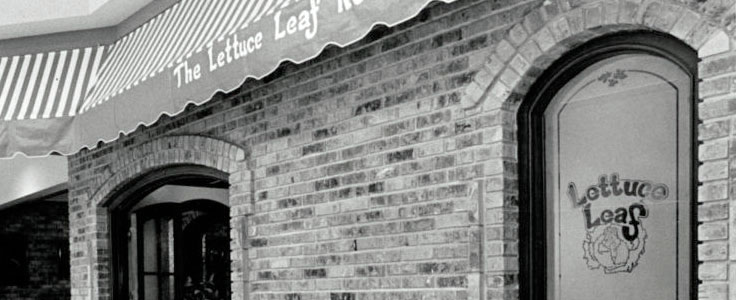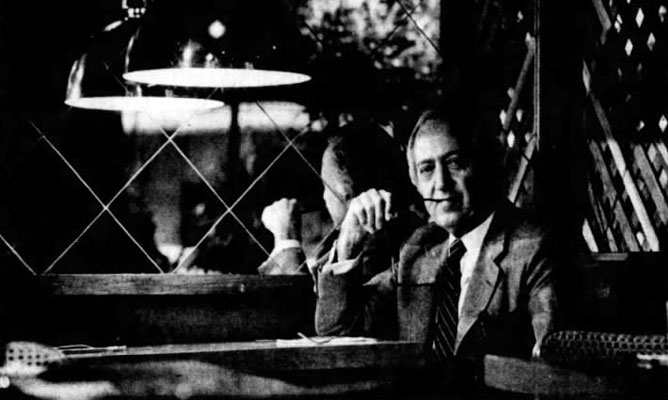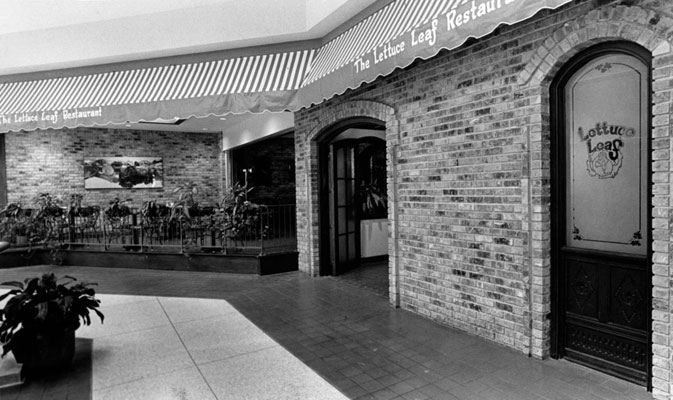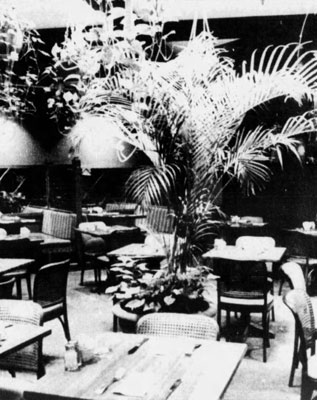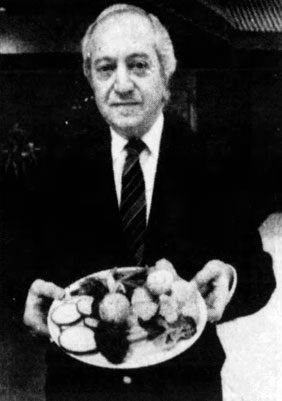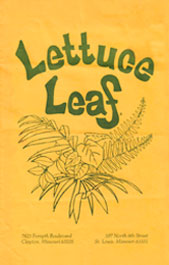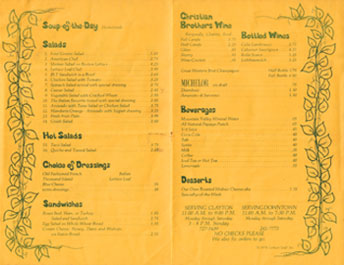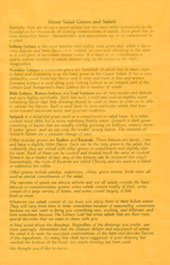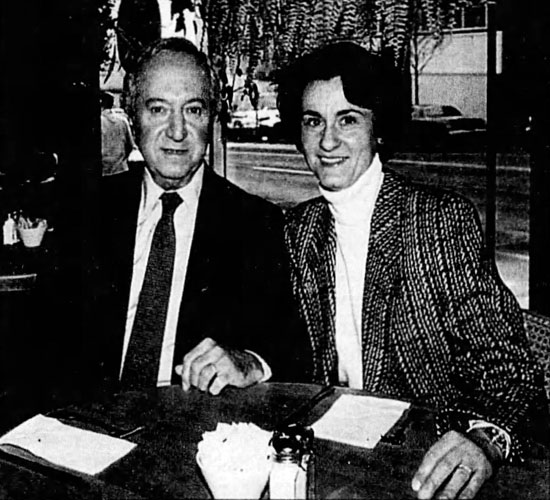|
Lettuce Leaf William Kenneth Saigh was born in Kewanee, Illinois. He earned a Ph.D. in business administration from St. Louis University. In 1976, after teaching marketing to college students for 21 years, he took a sabbatical from St. Louis University and opened a restaurant.
Saigh's restaurant at 7823 Forsyth in Clayton –
the Lettuce Leaf – served salads as entrées. It was a novel
concept at the time and was met with skepticism by the established
restaurant community – and the 17 banks that turned down Saigh's
loan request.
Not only did Saigh not close his doors, but he
opened a second Lettuce Leaf restaurant the following year at 107
North Sixth Street in downtown St. Louis. Another was opened in
Kansas City in 1978, a fourth in 1980 at Westport Plaza and a fifth
in 1984 at Crestwood Plaza.
The Saighs had always enjoyed salads for dinner at home. The idea for the Lettuce Leaf was born over a dinner with friends when Saigh wished aloud that he could eat that way at restaurants. A friend suggested the name, and the Saighs pursued it.
"My wife Christine and I started eating less
animal fats in our diet," he recalled. "So we found it lots of fun
to create salads. We also had a great garden that year to experiment
with – lots of broccoli, zucchini, cauliflower and eggplant. So we
just threw things in bowls and had lots of fun. And when we served
our concoctions to our guests, they loved it. The opportunities for
making salads are endless."
The Lettuce Leaf restaurants were carefully planned, from the ambience and menu to the targeted clientele, whom Saigh described as the "intellectually affluent." He reasoned he had two potential markets. "We’re drawing from graduates of fast food restaurants, the people saturated with grease and potatoes, and also from the other end of the spectrum." The other end, he said, were the people tired of paying expense-account prices for gourmet food.
The restaurants had elegant atmospheres, with
classical music playing in the background, which served to reinforce
the customer’s feeling they were eating at a nice restaurant,
despite the moderate prices. According to Saigh, the decor was
"supposed to give you a feeling of light, airy space. We have torn
down many walls to let in light in many of our restaurants."
As a marketing professor, Saigh was pleased with the success of his restaurants, as they were awash in successful marketing concepts. To speed service, salads were displayed in a glass case near the restaurant's entrance. Arriving diners were handed menus with entrées numbered to match those in the case. This way customers could order as soon as they sat down, service was speeded up and the customer turnover was more frequent. "Turning chairs is the whole idea," Saigh said. "At the Clayton location, we feed 650 to 750 people a day." The average customer at a Lettuce Leaf restaurant received their order within seven to eight minutes after being seated. Seventy-five percent of customers were female.
The Lettuce Leaf's display cases also
simplified and reduced the cost of menu printing. Since customers
usually knew what they wanted by the time they sat down at their
table, descriptions weren’t necessary. And customers were encouraged
to take the low-cost menus with them, a practice which boosted
carryout orders. The same menu was used at all Lettuce Leaf
locations. Early on, Saigh and his wife expanded the menu to include quiche, sandwiches and soup, in addition to salads. "We had to have something for everybody – especially the person who didn’t like salad," explained Saigh. "A table of four would come in and one person would say, 'I don’t want a salad,' and the whole group would walk out." In the early days, most customers stuck to the basics. "People would come in and order American chef, American chef, American chef. We wondered if they would ever explore," remembered Christine Saigh. One of William Saigh's favorite foods was the taco salad, which he claimed he invented. "One night we were making tacos at home and I realized that you could just toss the lettuce and add the ingredients and serve the shell as taco chips."
Christine Saigh developed all of the
restaurant's desserts.
She refused requests from Gourmet Magazine to divulge her recipe for
her Roasted English Walnut Cheesecake.
By 1989, Saigh had retired from teaching and was finalizing plans to franchise the Lettuce Leaf. However, no deals were completed. And then Saigh began to downsize. The Crestwood Plaza location closed in July of 1989 and the sole Kansas City operation closed in August of 1989. By the end of 1990, investors were being approached to buy the three remaining restaurants; Saigh had turned 71 and was eager to retire. In January of 1991, Saigh sold the Westport Plaza restaurant to an employee, Kris Krekeler. She joined forces with her father, Jerry Carter, and her sister, Kathleen Carter, to purchase the Clayton and downtown locations in July. A month later, the family sold the downtown Lettuce Leaf to its managers, Mark Baughman and Jan Filch. The 107 North Sixth Street space became Joseph's Italian Cafe in 1994. In 1993, the Carters closed the Westport Plaza and Clayton restaurants and relocated to a space in Chesterfield Center, which remained in business until 2002. The menu retained much of the original concept. William Saigh died on April 8, 2009 at the age of 89. His wife had died in 2007. Saigh had succeeded in traveling an uncharted road from marketing professor to restaurateur. "I always had preached to my students that you must get out and do things – be entrepreneurs – and don’t just go out and work for large companies," Saigh had explained. "So I took my own advice."
Copyright © 2019 LostTables.com |
||||||||||||

